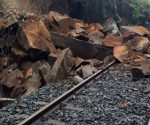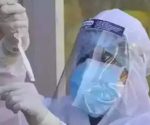Artist who made a Prez wait for hours, says unfazed by AI onslaught – The Times of India

Mumbai: For four consecutive days in 1999, the president of India would steal a few minutes out of his schedule to sit in front of a guest and say absolutely nothing. “On the first day, he gave me an entire half-hour,” recalls Nagpur-based Pramodbabu Ramteke (81), whose oil portrait of the ever-smiling K R Narayanan draws the eye at the London School of Economics and Political Science (LSE) just as his iconic painting of Dr Babasaheb Ambedkar stands as a familiar sentinel at government offices in Maharashtra.
Twenty-five years ago, when political science alumnus Narayanan became India’s tenth president, the LSE sought out ‘portrait guru’ Ramteke for a hands-on portrait commission. “They wanted me to work from his photo, but I insisted on observing him live,” recalls Ramteke, earning a flight to Delhi, where, seated amid diplomats and generals as a sarkari guest, he marvelled up close at the absence of shikan (crease) on the visage of the “humble” head of state.
The vignette formed a centrepiece memory for this former professor of Sir J J School of Art as he received the Roopdhar Lifetime Achievement Award from the Bombay Art Society (BAS) at Fort’s Jehangir Art Gallery last week. Presented during the BAS’ 133rd annual art exhibition — a landmark event that spotlighted 265 artworks by upcoming artists — the award recognized Ramteke’s “indelible impact on Indian art and his enduring legacy as both an artist and an educator.” Recipients of the 20-year-old award include legendary sculptors such as SK Bakre and Tyeb Mehta. “They were key members of Bombay’s Progressive Artists’ Group, which shaped modern art in India. So, I feel incredibly honoured,” said the veteran who — like Bakre and others of his generation — moved from realism to abstraction.
“Art is a form of service to the nation and to society,” said the veteran whose first-of-its-kind retrospective at Mumbai’s National Gallery of Modern Art in 2021 showcased 200 works from a 55-year career. ‘Open Mind’, its title, seems apt given that the retired art educator has not only dabbled in platography, a unique printmaking technique using aluminum sheets but also is now experimenting with minimalism. AI’s onslaught doesn’t seem to perturb the 81-year-old. “The computer,” Ramteke believes, has nothing of the human touch: “There’s simply no substitute for sitting across from a subject and drawing them live.”
Born three years before Independence in Nagpur, young Ramteke preferred studying trees over textbooks. “My siblings wanted to become doctors. But I was not interested in studies,” he says. He dropped out of a science degree to pursue art at Government Art College, Nagpur, before moving to Bombay in 1970. Here, he joined the Navy for five years before securing a teaching position at Sir JJ School of Art, where renowned art critic Sambhaji Kadam and artist Prabhakar Kolte — also known as the Indian Paul Klee — left deep impressions on him.
Known for his ability to capture the essence of his subjects, Ramteke became one of India’s most sought-after portraitists. “Though I was very young when Dr Ambedkar passed away, his ideas resonated deeply with me,” said Ramteke, who did not have the heart to sign his official portrait when he created it in 1985. “By signing that painting, he did not want to claim ownership which underscores his profound cultural and social artistic awareness,” explains a biography of the artist who believes the sign of a true artist is the lack of a sign. “Picasso, Van Gogh… all their works are recognizable even without their signature,” says Ramteke, citing the greats who could ably paint portraits of other artists too.
“Portraiture requires knowledge of history and philosophy as it is about expressing the reality of a person. Abstractionism, on the other hand, is about expressing your own emotional undercurrents,” said the octogenarian who has created numerous drawings of human figures as a broken man. “The broken, or the divide as a metaphor, has various interpretations. Is it a disconnect? An isolation? A discord?” asks a painting on behalf of Ramteke, whose 2015 exhibition ‘Rock Portraits’ — featuring semi-realistic portraits on naturally-shaped stones — marked a milestone in his career.
Roopdhar — the award he received while inaugurating the BAS exhibition on March 11 — is not his first lifetime achievement award. Having retired as head of the painting department at Government Chitrakala Mahavidyalaya, Nagpur, Ramteke won a lifetime achievement award in portraiture & creative painting by AIFACS Art Gallery, New Delhi, and another from Navi Mumbai Municipal Corporation. He has also won the Maharashtra State Art Award five times, with his works exhibited at prestigious forums such as the Art Society of India, State Lalit Kala Akademi in Hyderabad and Chennai and the Bombay Art Society.
















